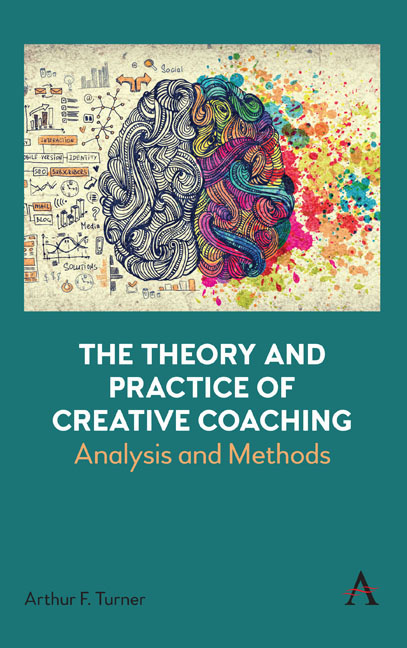Book contents
- Frontmatter
- Contents
- About the Author
- Preface
- Influences
- Introduction
- Section 1 Theory and Research
- Sections 2 and 3 Theory to Practice
- Section 2 Alternative Foci
- Section 3 Three Detailed Examples of Creativity in the Service of Executive Coaching (Walking, the Use of Finger Puppets and the Use of Music)
- Index
6 - Coaching and the Utilization of Silence
Published online by Cambridge University Press: 28 February 2024
- Frontmatter
- Contents
- About the Author
- Preface
- Influences
- Introduction
- Section 1 Theory and Research
- Sections 2 and 3 Theory to Practice
- Section 2 Alternative Foci
- Section 3 Three Detailed Examples of Creativity in the Service of Executive Coaching (Walking, the Use of Finger Puppets and the Use of Music)
- Index
Summary
I have previously written about silence in two different publications (Turner, 2019, 2020). This chapter deals with the practice of coaching and mentoring drawing on my experience of teaching art at university level and as a practitioner spanning the past 14 years. Many coaching practitioners find the topic of the use of silence as one of the most challenging skill-sets to become accomplished in, as it is often very different to the origins of their previous substantive roles of managers and leaders within organizations.
My previous two articles (one peer-reviewed journal article and the other a chapter in a coaching textbook) increased my understanding of this obvious but poorly understood part of the coaching discourse. As I suggested earlier, silence was a topic poorly covered, despite its importance, than the skills of questioning and listening (see, for example, Stanier, 2016; Hill, 2004; Whitmore, 2010). Starr (2016) only briefly focused on silence and highlighted ways in which utilizing silence well would give rise to more space for thinking (both for the coach and their client), providing greater liminal space for in-session reflection and calm oases of time (that is the (often) isolated segments of silence in a busy working day). These controlled silences, in themselves, facilitate time for contemplation and reflection. A further search of relevant literature has unearthed some more thoughts about silence. Neenan (2009) deals with the perceived awkwardness of silence, as experienced by individuals in managerial or organizational settings, used in the service of a more direct, ‘question and answer’ dyad. Rupert and Buschner (1989) had identified silence (along with praise and pre-instruction) as a skill more commonly found in coaching as opposed to teaching. In addition, the Emerald Insight and PsycArticles databases for English language peer-reviewed articles showed 16 results which linked coaching with the use of silence and in none of those (apart from a short article by Rankin (2008) and a brief mention as a sub-topic within communication skills for coaches (Gilley et al., 2010)) was the topic of silence the main part of the authors’ focus or direction of thought.
Many of the creative techniques covered in more detail in this section of the book depend to a lesser or greater degree on the ability of the coach to utilize silence (often in combination with active listening (Kubota et al., 2004)) during the coaching session itself.
- Type
- Chapter
- Information
- The Theory and Practice of Creative CoachingAnalysis and Methods, pp. 65 - 70Publisher: Anthem PressPrint publication year: 2023



